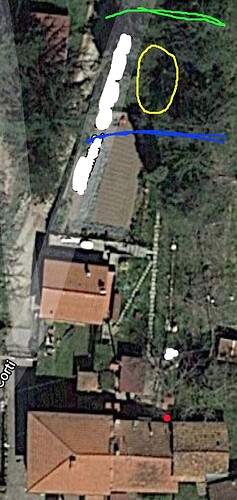Hello everyone. My first message here, hopefully someone will help.
Small caveat before I start: I live in the middle of nowhere, and the nearest neighbour who may have some wifi signal going on is about 3-400 meters away from me (and 50-60 meters higher), so no problems whatsoever for what concerns risks of interference with other people wifi.
Now to the problem. Until today, I had a TP-Link TD-W8970 as my main router. This router has three detachable antennas, and to one of the connectors was attached an outdoor antenna similar to this one: https://www.tp-link.com/en/home-networking/antenna/tl-ant2415d/ (might be the previous model, but it looks the same). The router had LEDE installed, flavour from here: http://ofmodemsandmen.com/ (my internet connection is through a 4G internet key, and this particular firmware is great for handling them, I had the 2017 firmware installed, based on LEDE 17.01.4). With such a configuration I was able to provide wifi signal all over the outdoor area of my house, see image below (up to ~ the green line, the outdoor antenna is the red dot):
Because the router is very old, plus I'm at home only once-twice a year, plus I wanted to do more things that the limited cpu/ram/rom combination of the router would allow me to, I replaced it today with a Linksys WRT3200ACM, to which I installed the same firmware as above (but the 2020 build, based on OpenWrt 18.06.7). The WRT3200ACM has 4 detachable antennas, so once again to one connector (the one on the left to be precise) I attached the outdoor antenna. In the new router, the 2.4 GHz radio is set to channel 11, 40 MHz width, and to the maximum power output the LuCI interface will allow me to select (20 dBm, 100 mW).
My problem is that with the new router the area reached by the outdoor antenna is reduced, more or less up to the blue line in the figure. Circled in yellow is an outdoor area where I need to have some connection, even if not a fast one, which I'm not having right now. My question is, then: is there a way to tell OpenWrt to pump a bit more power out of the 2.4 GHz radio, so that I can reach that yellow area? As I said, no risk of interferences/bothering the neighbours.
